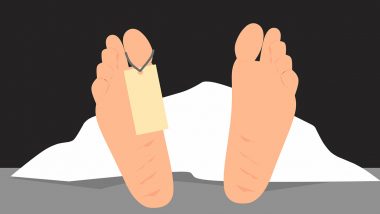Our heart is one of the crucial organs of our body and we must take utmost care of it. A healthy heart is a sign of a healthy body and we cannot neglect the organ that is helping us breathe, helping us survive every minute. The heart is also a symbol of expressing love and we have used the symbols for it since years. And while we have studied about the shape and structure of our heart from our science textbooks, it is not close to what we have been drawing or using in emoticons. Which draws us to question the origin of the heart symbol. Where did the heart symbol come from and why is it the way it is? Origin of Smiley: The World's First Ever Emoticon Was Created by Scott E. Fahlman On This Day in 1982.
History of the Heart Symbol
There are different theories about the origin of the heart symbol. From tree leaves to body parts, a heart symbol has found a representation everywhere. Some believe that it is derived from the shape of ivy leaves. These leaves have been associated with fidelity. On the other hand, some say it is derived from the anatomy of breasts or buttocks. 'Horn OK Please,' What's The Origin Of This Cool Phrase Painted Behind Every Indian Truck.
In literary references, a heart did not mean to convey love before the 13th and 14th centuries mentions the author of The Book of the Heart, Eric Jager. The shape meant some decoration. It became symbolised with the symbol of love in the medieval period. It although became linked to actual hearts as a body part. But there are different references in other literature. "In the Middle Ages, the pine-cone-shaped heart was represented with a rounded base," as mentioned in The Lancet. The symbol with an inner curve at the top (more like a fold) came in the early 14th century, as a shape of St. Valentine's heart.
This brings to the next theory about silphium, a giant fennel from the North African coastline. The ancient Greeks and Romans used it as a plant for birth control. The seedpod of Silphium was very similar to modern Valentine's heart. So the herb started being speculated with love and sex, which perhaps popularized it as a love symbol.
A cardiologist Carlos Machado was quoted says that the shape does somewhat resemble the four chambers of the heart, if it is cut open, or the image of the heart that appears in echocardiograms. This theory was presented in ancient medieval texts.
During the Renaissance, the shape grew popular into a sign of emotion, pleasure, eventually into love. Now, the exact origins of the symbol may still be not known, it is unimaginable to think of any other symbol like a heart other than what we do.
(The above story first appeared on LatestLY on Sep 26, 2018 04:44 PM IST. For more news and updates on politics, world, sports, entertainment and lifestyle, log on to our website latestly.com).













 Quickly
Quickly




















